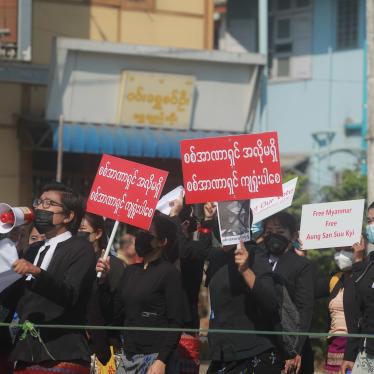(New York) - The Chinese government’s decision to reduce the number of Tibetans on Lhasa’s most powerful ruling body raises concerns about the role of Tibetans in administering the region, Human Rights Watch said today.
Appointments made in September to the Chinese Communist Party’s committee in Lhasa, which in effect runs Tibet’s capital, have a lower proportion of Tibetans than at any time in the last 40 years, according to available records. For the first time in 25 years, the Lhasa committee is to be led by an ethnic Chinese politician. Tibetans have faced a high degree of political repression since China’s annexation of Tibet in 1951.
“China seems to be pushing Tibetans out of positions of authority,” said Sophie Richardson, deputy Asia director at Human Rights Watch. “Beijing’s promotion of ethnic Chinese leaders fundamentally compromises Tibetans’ right to participate in Lhasa’s most powerful institution.”
The Chinese government is subject to constitutional requirements which stipulate that the leaders of an “autonomous area,” such as the Tibet Autonomous Region, and most of the representatives to the People’s Congress, must be members of the main nationality that lives there. But these laws apply to the government and the Congress, not to the Chinese Communist Party, which controls the government and holds all final decision-making powers.
The shift away from Tibetan participation in the Lhasa ruling body follows a significant change in rural administration in the Tibet Autonomous Region. In 2003, ethnic Chinese officials were sent for the first time to run xiang, or township, and zhen, or small town, administrations throughout the Tibet Autonomous Region. So far some 280 ethnic Chinese are believed to have been sent to take up these positions, radically altering the role of rural Tibetans in the lowest level of governance in Tibet.
On September 25, 2006, the annual congress of the Lhasa City Party Committee confirmed the appointment of a new party secretary, Qin Yizhi, the first ethnic Chinese leader of the city since July 1980. The seven previous holders of this position since 1980 were all Tibetans, of whom three went on to become governors of the Tibet Autonomous Region.
In 1986, 80 percent of the members of the city’s party committee were Tibetan, and in 1997, 55 percent of its leading members were Tibetan – but only eight of the 30 members of the new party committee of Lhasa are Tibetan, judging by the names given in the Lhasa Evening News on September 26 (almost all Tibetans in the Tibet Autonomous Region use Tibetan names). At just over 26 percent, this is believed to be the lowest percentage of Tibetans on a party committee in the city since 1966.
In recent decades, the Chinese Communist Party regularly included Tibetan members in party committees. Although the Chinese Communist Party has never allowed a Tibetan to become Party Secretary of the Communist Party in the Tibet Autonomous Region, it had allowed Tibetans to run the Lhasa committee.
The timing of the new appointments raises concerns about the Chinese authorities’ intentions toward managing Tibetan administration, Human Rights Watch said. Many Tibetans have feared that the railroad line linking Lhasa with Xining, the capital of neighboring Qinghai province, which opened on July 1, 2006, would expedite the influx of more ethnic Chinese to Tibet, further diluting Tibetans’ control. Placing more Chinese leaders in control of the city now that the railway project is completed could indicate aggressive new Chinese policies that limit Tibetans’ ability to participate.
“The participation of Tibetans should be increasing, not falling to historically low levels,” said Richardson. “If Beijing is serious about allowing Tibetans real control of Lhasa and other Tibetan areas, it will reconsider these appointments.”
For background on the makeup of the Lhasa City Communist Party Committee, please click here.






